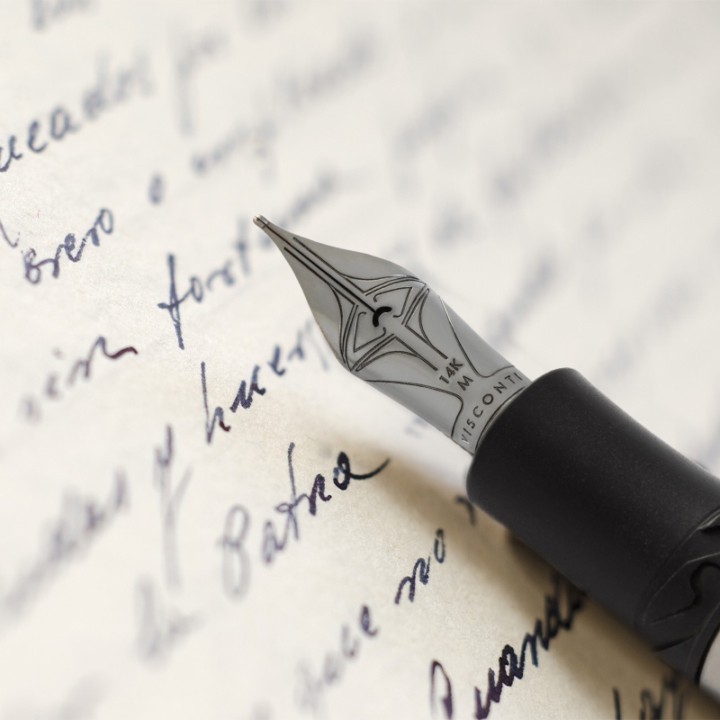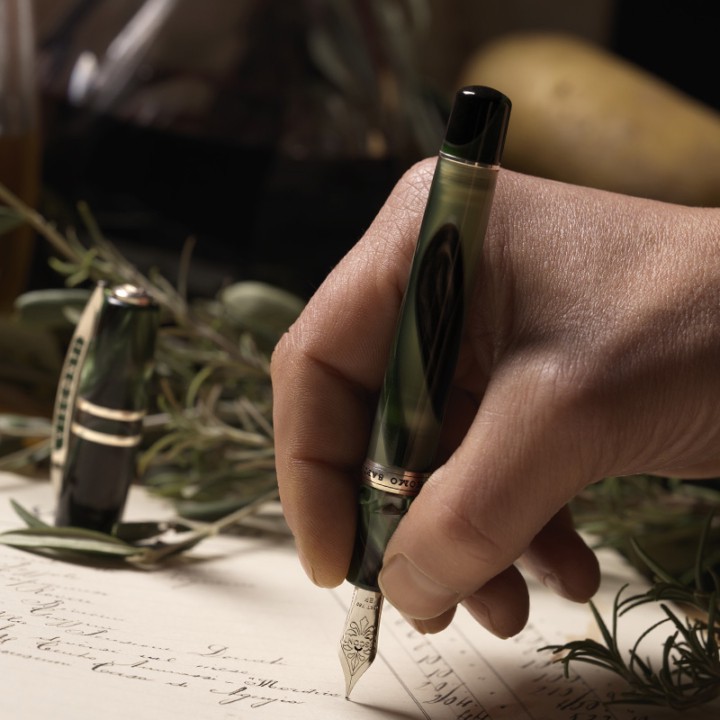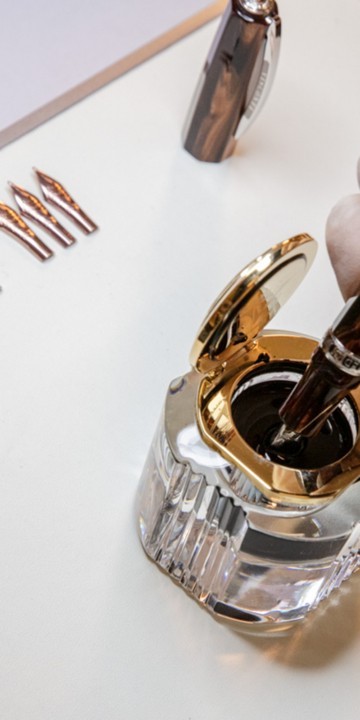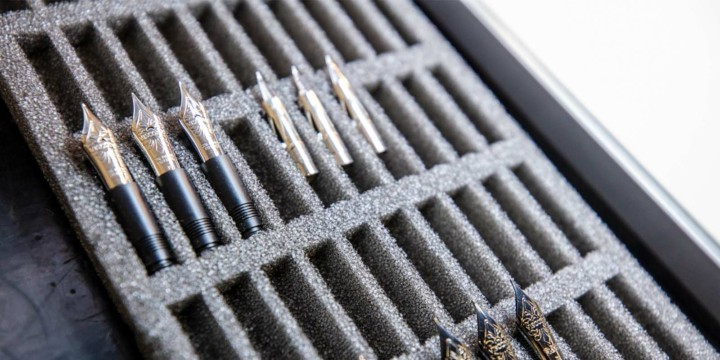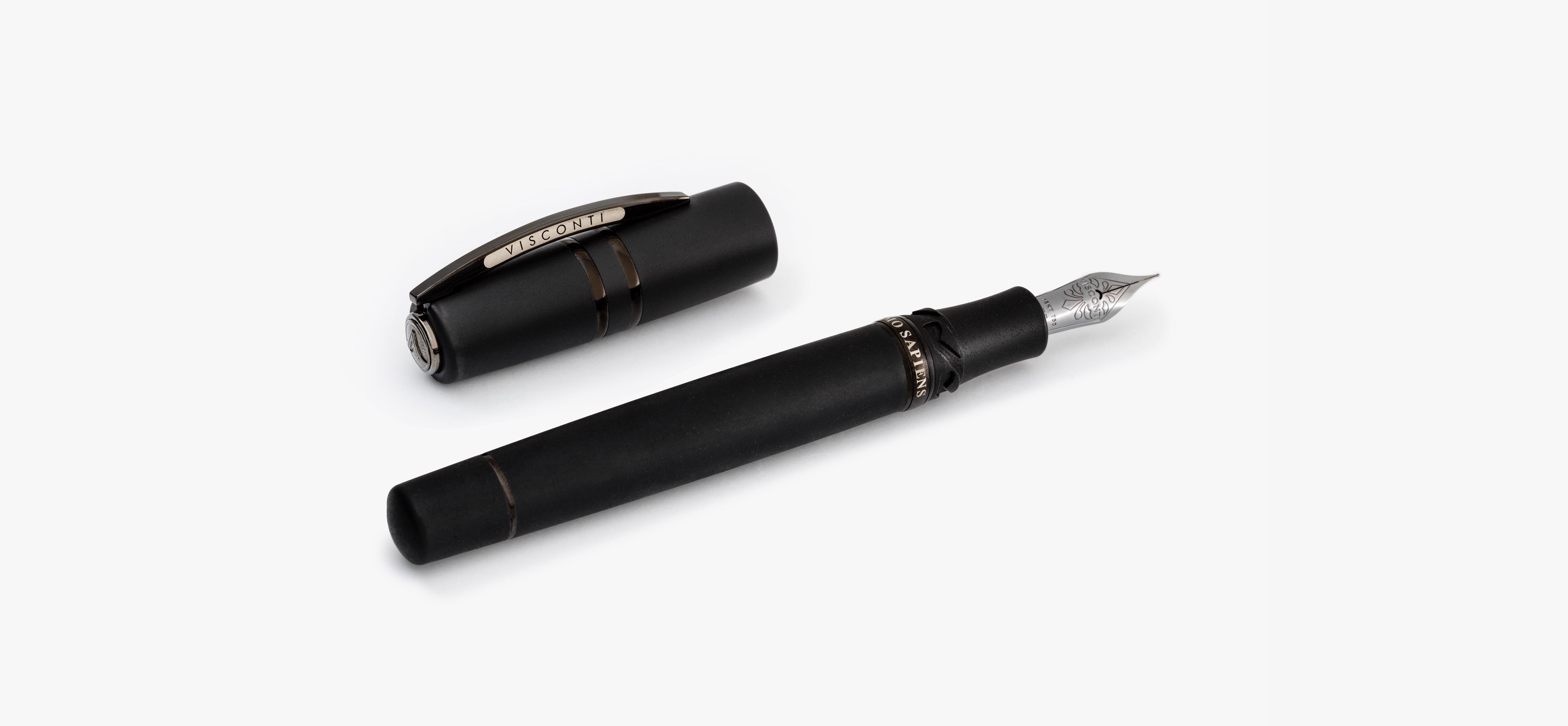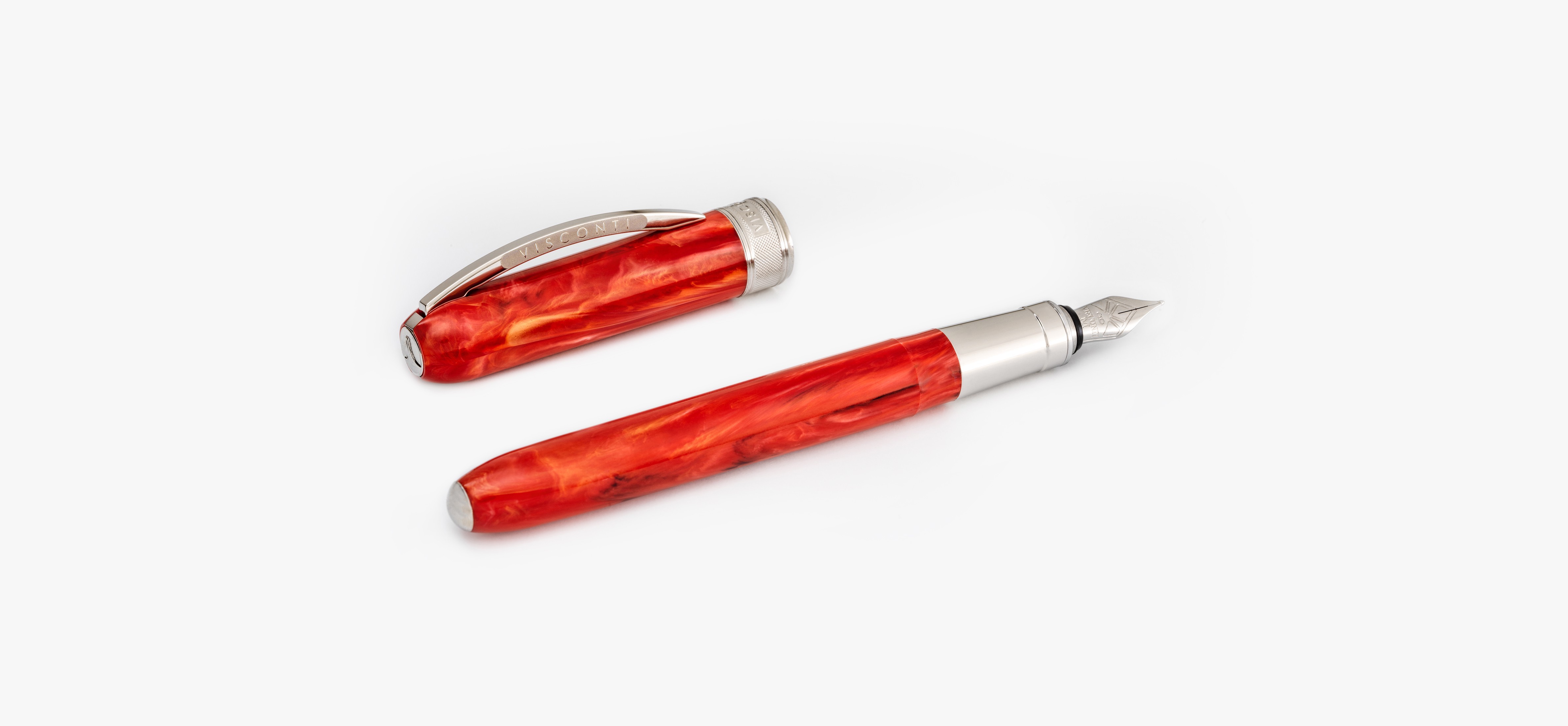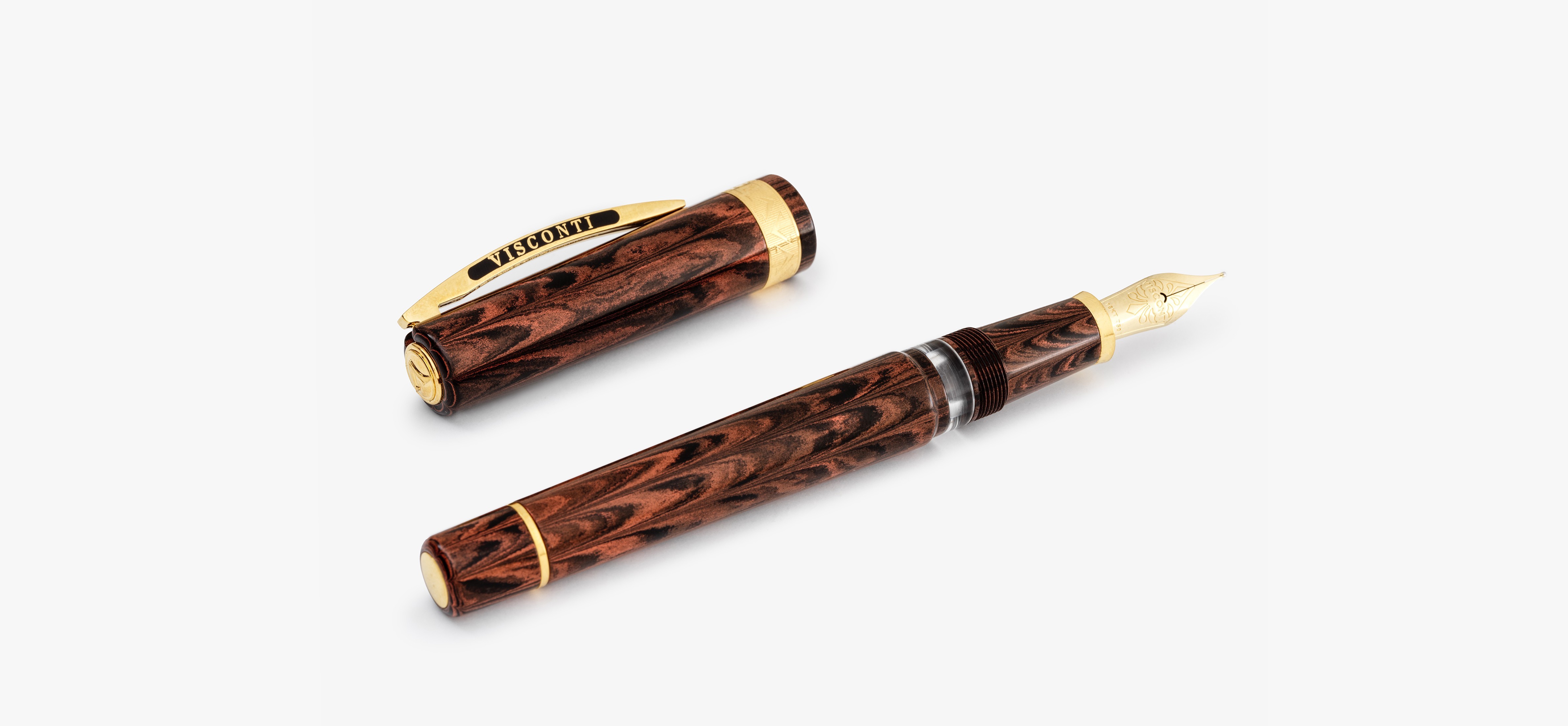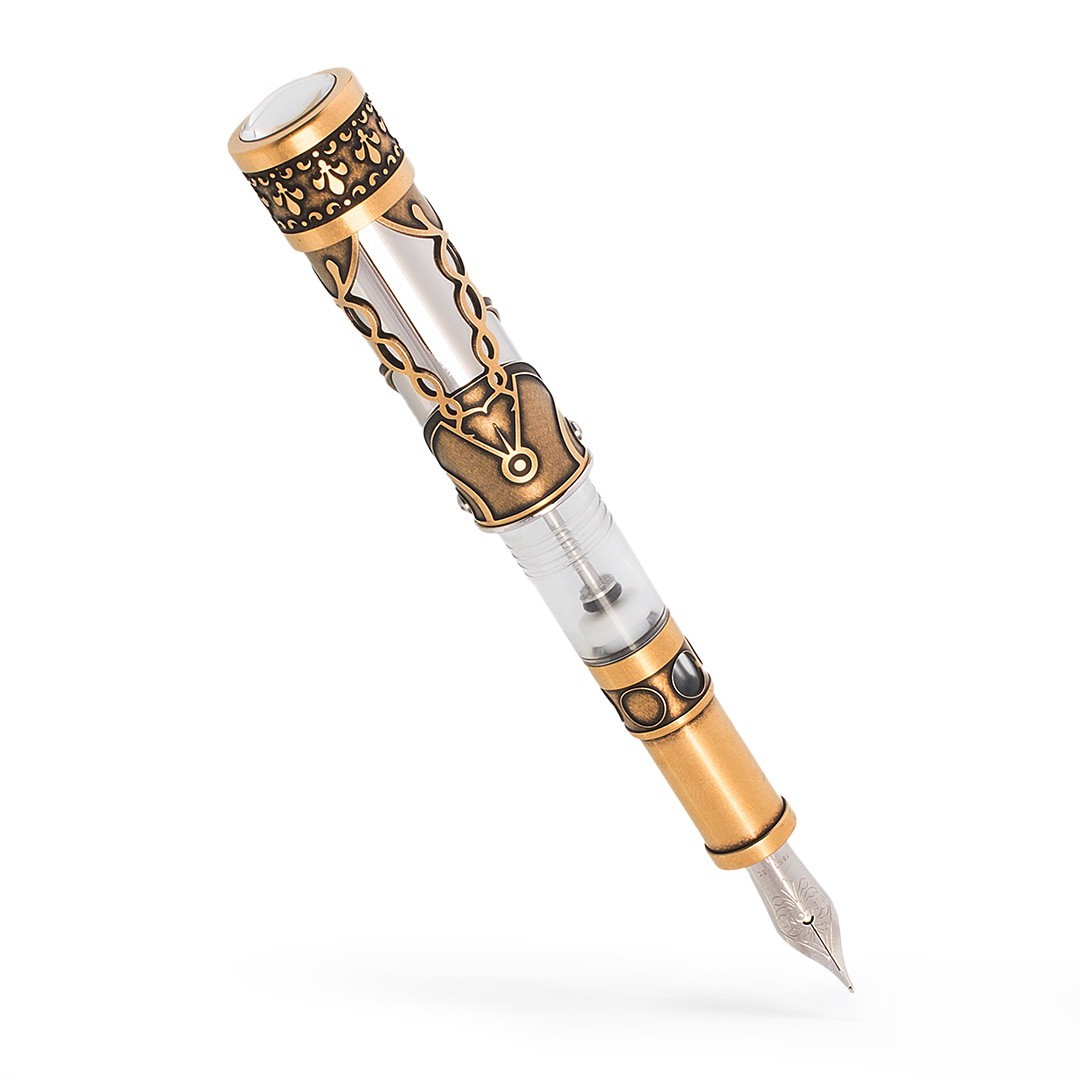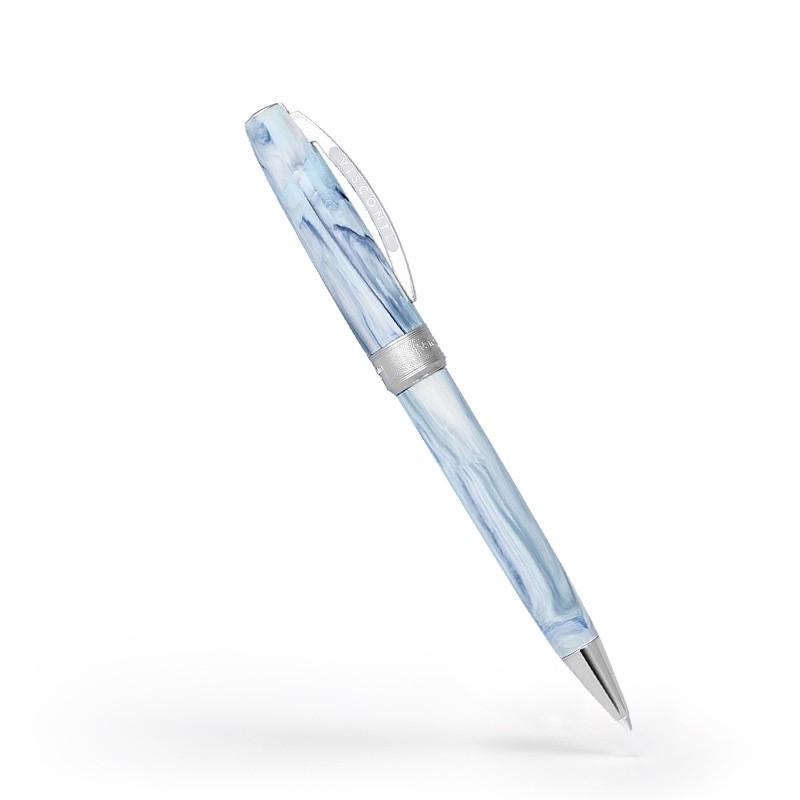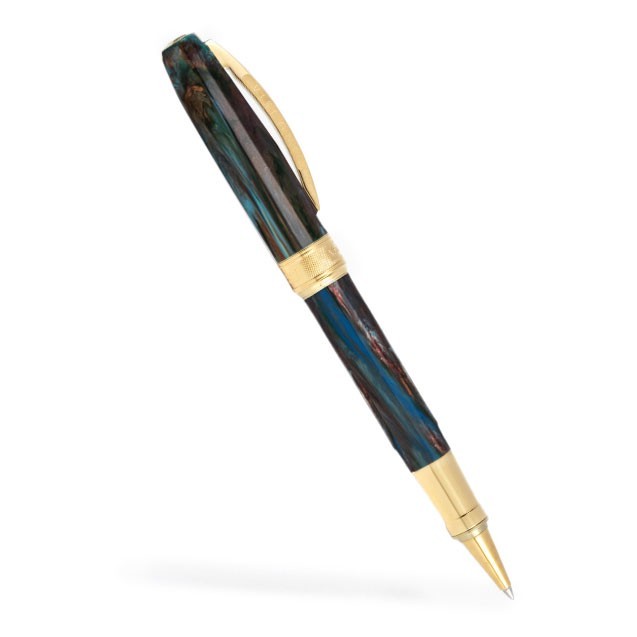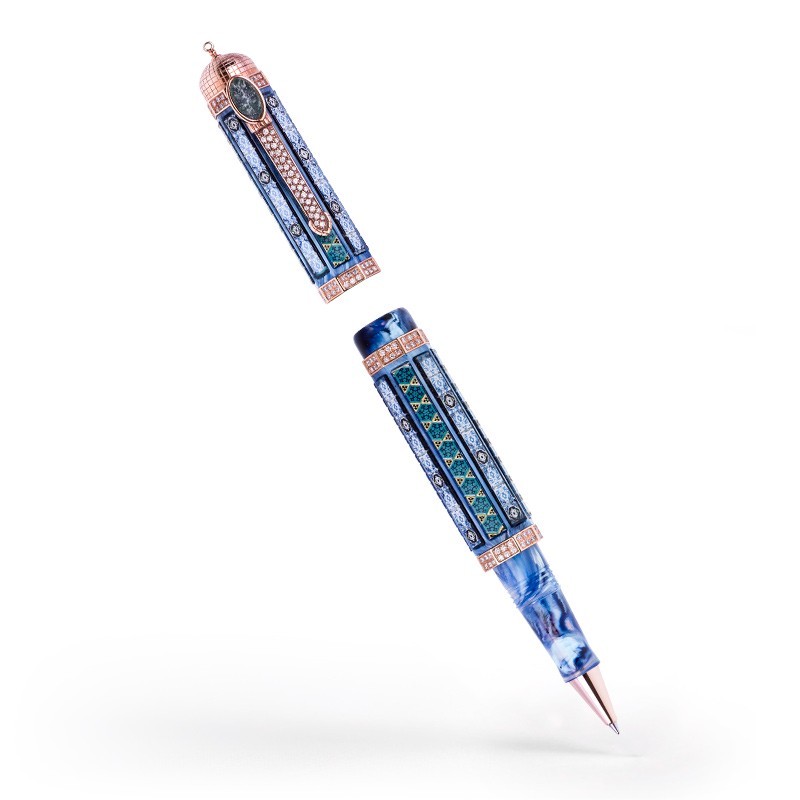Those who have never written with a fountain pen might think that it is difficult to do; in reality, writing (and writing well) with this type of instrument is not only easier, but also extremely satisfying. Here are a few basic rules to help you gain experience and confidence when using such a sophisticated instrument.
Why write with a fountain pen
Writing with a fountain pen is a unique sensation that cannot be compared to writing with other pens or typing on a keyboard. Finding the time to write down reflections, creative texts and love letters can bring back the narrative authenticity that is often lost in digital communication. Writing with a fountain pen is also a relaxing and intimate moment, a space where you can slow down and experience the anchoring physicallity of the pen as it glides over the paper.
Though fountain pens are now surrounded by a vintage aura, they remain the most suitable writing instrument to discover, or rediscover, one’s own calligraphy. Fluid and expressive, the nib’s strokes are unique and irreplicable. They carry with them the same age-old indelible charm. But how can one make the most of this writing method?
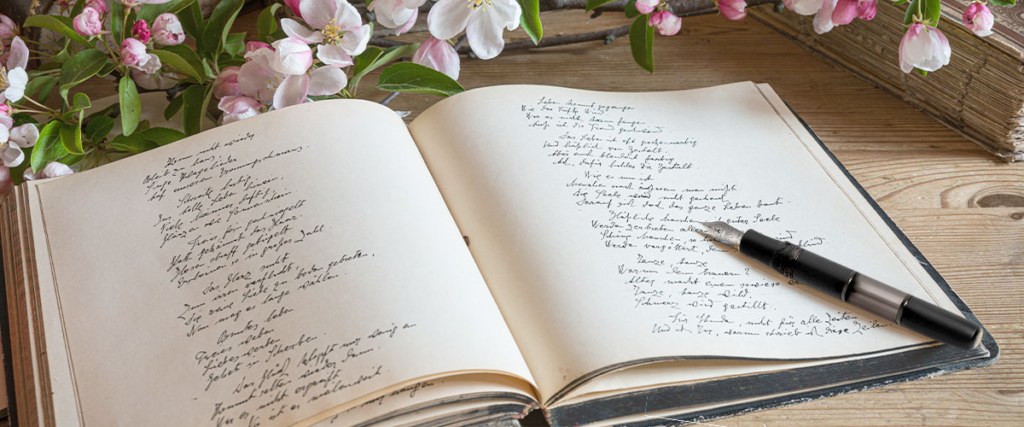
Body position
Writing with a fountain pen engages the whole body. It is therefore important to check your posture first, even before picking up the fountain pen. Here is the recommended body position:
- – keep your chest above the writing surface;
- – keep your back straight and your upper body upright;
- – tilt your head slightly forward;
- – keep the forearm of the writing hand resting almost completely on the writing surface;
- – place the forearm of the non-writing hand slightly further back;
- – keep your legs perpendicular to the floor;
- – keep your feet flat on the floor
Grip
Now that the correct position has been found, let us move on to how the pen should be held. This step is fundamental because it is directly connected to the writer’s handwriting. Here are the guidelines to follow:
- – hold the fountain pen between your thumb and middle finger, about 2-3 centimetres away from the nib;
- – place your index finger on the pen, higher than the other two fingers;
- – arch your ring and little finger slightly and place them on the paper to support your hand;
- – rest your wrist sideways and perpendicular to the axis formed by your shoulders;
- – tilt the pen at 45° to the paper.
You may have difficulty finding the right balance between the size of your hand and the pen. Placing the cap at the end of the pen can be a good way of balancing the weight of the pen. Everyone has a different perception of balance, finding your own may take a few attempts.
The right pressure on the paper
Once you have got a good grip on the pen, it is time to start sliding it across the paper. While writing, your hand must remain taut and your movement controlled. The important thing to remember is to maintain the same posture at all times: only your arm and shoulder move to run the fountain pen across the paper while exerting the right amount of pressure.
Pressing hard on the nib to get the ink on the paper isn’t necessary, only apply gentle pressure. Pressing too hard may actually damage the nib and prevent the ink from flowing properly.
The right nib angle
In order for the nib to write smoothly and continuously, it needs to be positioned on the paper at an angle of between 40° and 55°, which may vary slightly for each pen. The inclination of the nib is what distinguishes writing with a fountain pen from writing with any other ballpoint or rollerball pen, which are designed to write even when held vertically.
Familiarising yourself with the correct angle without scratching the paper or writing in fits and starts will probaly take a few attempts at first. It is also advisable not to twist the pen while writing, as this could cause the paper to tear.
Choosing a nib
Finally, the type of fountain pen nib you select will also influences the look of your caligraphy. The main options include:
- – rounded nib to create even lines;
- – fine nib to create fine lines;
- – stiff nib for a more consistent grip on the paper;
- – gold nib to control the width of the lines thanks to greater flexibility;
- – steel nib for uniform writing;
- – stub nib or italic nib (wide and flat) to make broad or thin lines, thanks to the vertical movement that draws lines as wide as the nib and the horizontal movement that draws fine lines.
We can conclude that, to write well with a fountain pen, the most important factors are the position of the body, the grip, the pressure on the paper, the inclination of the nib and the correct choice of nib for your personal style. Once all these steps have been followed, writing with a fountain pen becomes extremely natural; a true art form to express every nuance of your thoughts.


